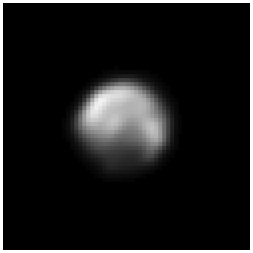New Images From New Horizons Reveal More Detail About Pluto's Surface

New images taken by New Horizons from just 50 million miles (77 million km) away, show the highest resolution views of Pluto ever taken. The images were captured by the Long Range Reconnaissance Imager (LORRI), a digital camera that is connected to a large telephoto telescope. LORRI is used to provide long-range and high-resolution mapping imagery.
The new images were taken 20 million miles closer than the previous set of images released in mid-April and contain about twice as many pixels. Finer details can be seen on the surface, including a prominent bright area that may be a polar cap.
"These new images show us that Pluto's differing faces are each distinct; likely hinting at what may be very complex surface geology or variations in surface composition from place to place," said New Horizons Principal Investigator Alan Stern, of the Southwest Research Institute in Boulder, Colorado. "These images also continue to support the hypothesis that Pluto has a polar cap whose extent varies with longitude; we'll be able to make a definitive determination of the polar bright region's iciness when we get compositional spectroscopy of that region in July."

As New Horizons continues to get closer to Pluto, images will continue to show dramatically finer surface details.
"By late June the image resolution will be four times better than the images made May 8-12, and by the time of closest approach, we expect to obtain images with more than 5,000 times the current resolution," said Hal Weaver, the mission's project scientist at the Johns Hopkins University Applied Physics Laboratory (APL) in Laurel, Maryland.
For the original press release, read here.







